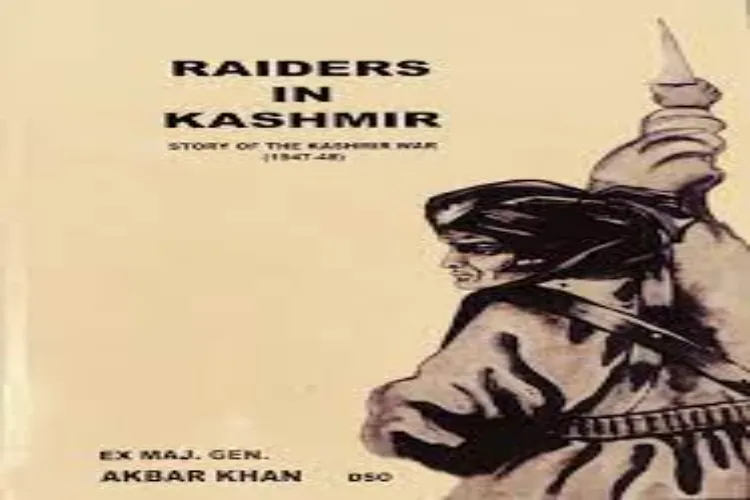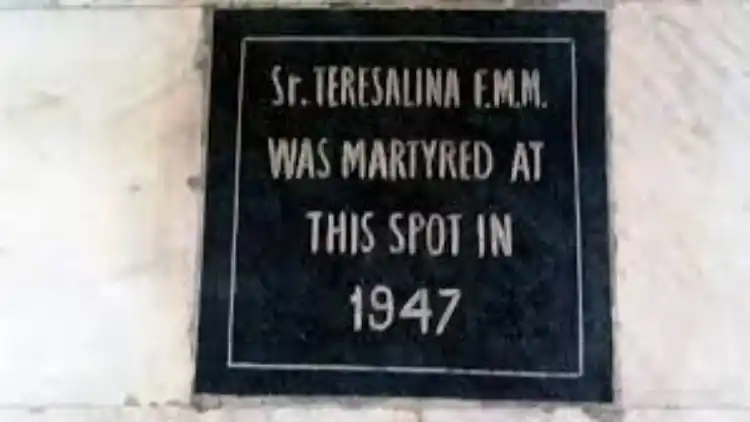.webp)
Ahmed Ali Fayyaz
Amin Kamil’s Kashmiri novel Gati Manz Gaash (Light in The Darkness), a fiction set in the backdrop of the Pakistani tribesmen attacking Kashmir in October 1947 and unleashing a reign of terror, reminds us of how Muslims tried to save the Hindus and Sikhs from the blood-thirsty kabalis (tribesmen in Kashmir). in what was the first proxy war launched by the then recently born country.
The story of the novel is about Fatima’s struggle to save a Sikh from the Pakistanis as they were rampaging Baramulla, north Kashmir, and its suburbs.
Hundreds of Sikhs and Hindus were massacred by the heavily armed raiders on their way from Kohala to Srinagar, both at Muzaffarabad and Baramulla. Pakistani General Akbar Khan’s book Raiders in Kashmir mentions how scores of non-Muslim men and women jumped out of houses to die in the river Jhelum when the carnage was unfolding.
In the backdrop of the burqa-clad Fatima showing a Sikh as her Muslim husband, a horde of marauders swooped down on the Christian Missionary St Joseph’s hospital and school which drew students like Najibullah who became Afghanistan’s President later in 1987. On the morning of 27 October 1947, the raiders on pillage gunned down at least six missionaries and patients before looting whatever came their way.
Some unconfirmed accounts put the number of the non-Muslims killed in and around Baramulla at 3,000. Eyewitnesses say how the men were shot dead and the young Sikh girls taken away by the raiders on their shoulders.

Pakistani Maj Gen Akbar Khan's book on kabali raid
On the 70th anniversary of the St Joseph’s carnage, the hospital staff in October 2017 invited James and Dough Dykes of Britain whose parents, Tom and Biddy Dykes, were shot dead in front of them by the marauders. James and Dough, visiting Baramulla for the first time after they were orphaned, were accompanied by the prominent BBC journalist Andrew Whitehead. The author of “A Mission in Kashmir”, Whitehead has extensively reported on politics and turmoil in India and Pakistan.
"I saw my parents being killed - that's what I've been told. My father tried to stop the attackers from approaching the nuns and he was shot. I ran screaming towards my father. My mother ran after me - and then she was also shot”, Dough narrated to Whitehead on the spot.
Jose Barretto, the husband of the hospital doctor, tried to save the nuns who ran the mission. He was captured, put up against a tree and shot dead. A nurse, Philomena, died while seeking to protect the patients. Motia Devi Kapoor, a patient, was stabbed to death in her hospital bed.
The Franciscan Missionaries of Mary also lost one of their own - Sister Teresalina, a newly-arrived Spanish nun in her 20s. She leaped in front of the convent's Belgian mother superior, taking a bullet intended for the older woman. She is buried in the nuns' graveyard on the other side of the mission grounds.
“All were murdered by armed tribesmen from Pakistan who invaded Kashmir to try to prevent the princely state from becoming part of India after the British withdrawal - and to take away as much loot as they could carry. As they ransacked St Joseph's on 27 October 1947 the first Indian troops were landed in Kashmir to repulse the invaders - and they have been here ever since to prevent the region from being seized by Pakistan, which claims it as its own”, Whitehead recorded.

The toiombstone of Nun Sr Teresalina in Barammula cemetery
"Then these fellows that had raided the hospital started to batter down the door of the room we were in. The splinters started to fly across the room, and I could see the wild faces through the cracks in the door. The tribesmen were looting the place, they were pulling everything apart, and putting their booty into sheets which lay on the floor and were made up into bundles”, one of the Dykes brothers narrated.
A family servant managed to take the five-year-old away from the marauders. A little later they returned to see if they could find Tom's family. "We went back to the central part of the hospital, a garden area with a path around it. And we came across these bodies, covered with blood. And sitting on top, howling his eyes out was my little brother Douglas."
Whitehead says that he stumbled on this story in 1997. “I met the last remaining nun who had survived the ordeal. Sister Emilia, an Italian, recounted how the tribesmen had climbed over the mission walls, smashed through locked doors, and manhandled some of the nuns. After they killed her friend - the new Spanish sister, Teresalina - Emilia thought she too was about to die”, Whitehead chronicles.
“The hospital run by the 16 nuns had a high reputation. Biddy Dykes - a motherly woman with a ‘round, happy face darkish hair and a lovely smile’, in the description of another army wife - went there to give birth to at least two of her sons.
Their father was a Sandhurst-trained soldier from a family with a tradition of service in the British Indian army. He married Biddy, a military nurse, at Agra, the city of the Taj Mahal, in 1940, and had risen to the rank of lieutenant colonel by the end of World War II. When the British pulled out of India in August 1947, he agreed to stay on for a few months as an officer in the Indian army's Sikh Regiment to help the transition.
.webp)
Pakistani kabalilashkar on way to Srinagar
The three orphaned Dykes boys along with about 70 others were held captive in a single hospital ward for 10 days, while war raged around them. The Indian air force repeatedly bombed the mission, which the Pakistani invaders were using as a transport and supplies depot.
The two older boys eventually returned to Britain by boat. James, the baby, was so weak he was not expected to survive. He was initially cared for by Lady Messervy, the wife of the British general who had become the first commander-in-chief of the Pakistan army, and slowly began to improve. When, a few months later, he was well enough to make the journey home, he was taken in by a different wing of the family. He didn't see a lot of his older brothers as they were growing up and at 18 he emigrated to South Africa.
ALSO READ: How Kashmiris forgot Maqbool Sherwani who failed Pakistani raiders’ invasion in 1947
"We never talked much about our parents - we knew the bare facts of what happened, but we were encouraged not to dwell on it," said Doug Dykes, a brewer by profession who lived in Dorking, London. “It was only when I made contact with the family, sent photos of the graves, and sought their testimonies that the brothers started to talk among themselves about their memories and feelings”.
